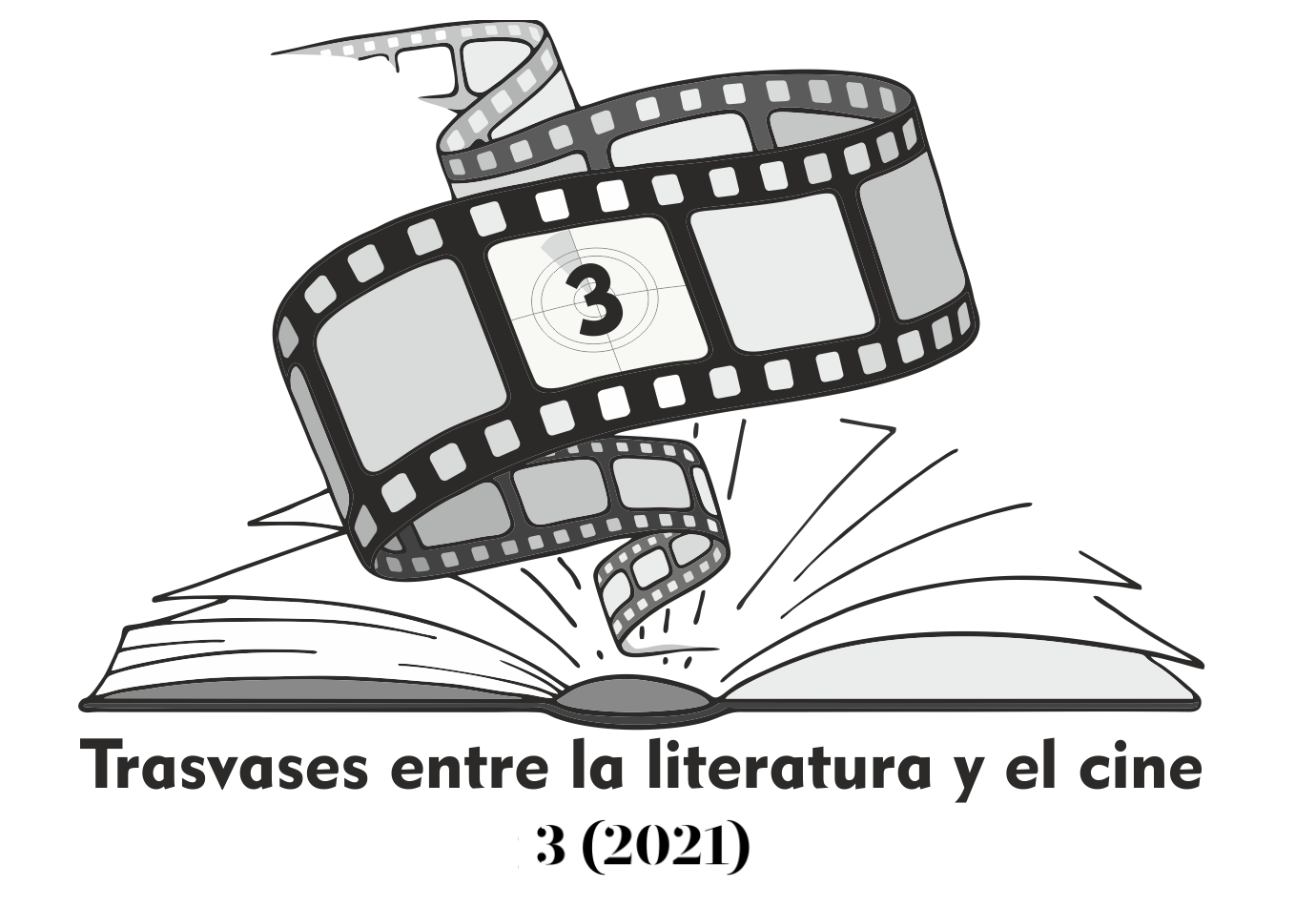Translations from the vignette to the frame. The Graphic Narrative and its Film Adaptations
DOI:
https://doi.org/10.24310/Trasvasestlc.vi3.12433Keywords:
comic, graphic nove, animation cinema, live-action cinema, comic-film adaptationsAbstract
Comic-Book, BD album (bande dessinée) or the Graphic Novel, exemplify some of the Comic formats and are potential source texts that provides the cinema with a variety of stories that become new audiovisual and filmic texts. This paper examines the operational processes that occur in transfers and describes thematic, aesthetic and plot issues related to the procedures involved in the adaptation of a graphic narration in the audiovisual media together with the changes and displacements generated in the film.
Downloads
Metrics
Publication Facts
Reviewer profiles N/A
Author statements
Indexed in
-
—
- Academic society
- N/A
- Publisher
- Universidad de Málaga
References
AERTSEN, Víctor (2021), «De la línea clara al movimiento perpetuo: realismo y dinamismo en la adaptación cinematográfica de Las aventuras de Tintín de Steven Spielberg», Trasvases entre la literatura y el cine, 3, págs. 55-78.
ALTARRIBA, Antonio (2011), «Introducción sobre el origen, evolución, límites y otros debates teóricos en torno a la historieta», ARBOR: Ciencia, Pensamiento y Cultura, 2 (Extra), págs. 9-14, DOI: 10.3989/arbor.2011.2extran2111
BAILE LÓPEZ, Eduard (2020), «En el cómic nadie puede oír tus gritos: a propósito de las adaptaciones del cine al cómic», Quadernsde cine, 15, págs. 25-43.
BOLTER, Jay David y GRUSIN, Richard (2000), Remediation: Understanding New Media, Massachusetts, MIT Press.
BÓRQUEZ, Néstor (2021), «De la novela gráfica al documental: el caso de María y yo», Trasvases entre la literatura y el cine, 3, págs. 79-100.
CONSTANDINIDES, Costas (2010), From Film Adaptation to Post-Celluloid Adaptation: Rethinking the Transition of Popular Narratives and Characters Across Old and New Media, New York, Continuum.
FIELD, Syd (1995), El manual del guionista: ejercicios e instrucciones para escribir un buen guión paso a paso, Madrid, Plot.
FREZZA, Gino (2017), La Máquina del Mito. En el Cine y el Cómic, Madrid, Ediciones Marmotilla.
FREZZA, Gino (2020), «STOP AND GO. Dialettiche del Movimento tra fumetto e cinema», Tebeosfera: Cultura Gráfica, 15, traducción de Francisco Sáez de Adana [En línea: https://www.tebeosfera.com/documentos/stop_and_go._dialettiche_del_movimento_tra_fumetto_e_cinema.html Fecha de consulta: 05/02/2021]
GAUDREAULT, André y MARION, Philippe (2004), «Transécriture and Narrative Mediatics: The Stakes of Intermediality», en Robert Stam y Alessandra Raengo (eds.), A Companion to Literature and Film, Malden, Blackwell Publishing, págs. 58-70.
GARCÍA-REYES, David (2020), «Reescrituras en Soldados de Salamina o las sendas de la memoria: Desplazamientos de la literatura en el cine y en la narración figurativa», Trasvases entre la literatura y el cine, 2, págs. 271-291 [En línea: doi.org/10.24310/Trasvasestlc.vi2.9191 Fecha de consulta: 20/03/2021]
GARCÍA SÁNCHEZ, Sergio (2000), Sinfonía gráfica: variaciones en las unidades estructurales y narrativas del cómic, Barcelona, Glénat.
GÓMEZ ROSADO, Raquel (2010), «La fascinación del pixel», en AA.VV., Estéticas de la animación, Madrid, Fundación Luis Seoane/MAIA Ediciones, pp. 209-230.
MANOVICH, Lev (2001), The Language of New Media, Massachusetts, MIT Press.
MCCLOUD, Scott (1994), Understanding Comics. The Invisible Art, New York, Harper Perennial.
PATINAX, Maurice (1996) «Collectionner les bandes dessinées», en Moliterni, Claude, Mellot, Phillippe y Denni, Michel (eds.), Les Aventures de la BD, París, Gallimard, pp. 138-142.
PONS, Álvaro (2013), «La adaptación de cómics al cine en Francia y EEUU: Del homenaje artístico a la franquicia mercadotécnica», L’Atalante. Revista de estudios cinematográficos, 16, págs. 27-34.
REVERT, Jordi (2016), «Orígenes y fundamentos de la intermedialidad entre cine y cómic: una aproximación para la era digital», adComunica. Revista Científica de Estrategias, Tendencias e Innovación en Comunicación, 11, págs. 145-163 [En línea: http://dx.doi. org/10.6035/2174-0992.2011.9. Fecha de consulta: 07/04/2021].
PALACIO, Manuel y DE LA ROSA, Emilio (1983), «Cómic y cine de animación», Neuróptica: estudios sobre el cómic, 1, págs. 71-78.
SÁNCHEZ-NAVARRO, Jordi (2020), La imaginación tangible. Una historia esencial del cine de animación, Barcelona, Editorial UOC.
SÁNCHEZ NORIEGA, José Luis (2018), Historia del Cine: Teorías, estéticas, géneros, Madrid, Alianza. Tercera Edición.
SEGER, Linda (1993), El arte de la adaptación, Madrid, Rialp.
SCOTT FITZGERALD, Francis, DEFILIPPIS, Nunzio, WEIR, Christina y CORNELL, Kevin (2009), El curioso caso de Benjamin Button, Madrid, Gadir.
STAM, Robert (2014), Teoría y práctica de la adaptación, México, UNAM.
WRIGHT, Jean Ann (2006), Guionización y desarrollo de la animación: Desarrollar el guión para su venta, Andoain, Elsevier/Escuela de Cine y Vídeo.
Downloads
Published
How to Cite
Issue
Section
License
All authors published in this journal accept the following copyright terms:
a. Authors retain their authors´ rights (copyright) and grant First Publication Rights to the journal, which whill be published under a the Creative Commons Attribution-NonCommercial-ShareAlike 4.0 International (CC BY-NC-SA 4.0) license. All about this license is available in the following link: <http://creativecommons.org/licenses/by-nc-sa/4.0>
b. Authors may separately establish additional agreements for the non-exclusive distribution of the version of the work published in the journal (e.g. including it in an institutional repository, or publishing it in a book) with an acknowledgement of its initial publication in this journal.
c. Authors are allowed and encouraged to disseminate their work electronically (e.g. in institutional repositories or on their own website) as this can lead to productive exchanges, as well as earlier and more extensive citation of published work.
The author is responsible for obtaining permission from the copyright holder when using copyrighted materials.
This electronic journal is published by University of Málaga (UmaEditorial), thus it is necessary to cite the origin of any partial or total reproduction.








22.png)










